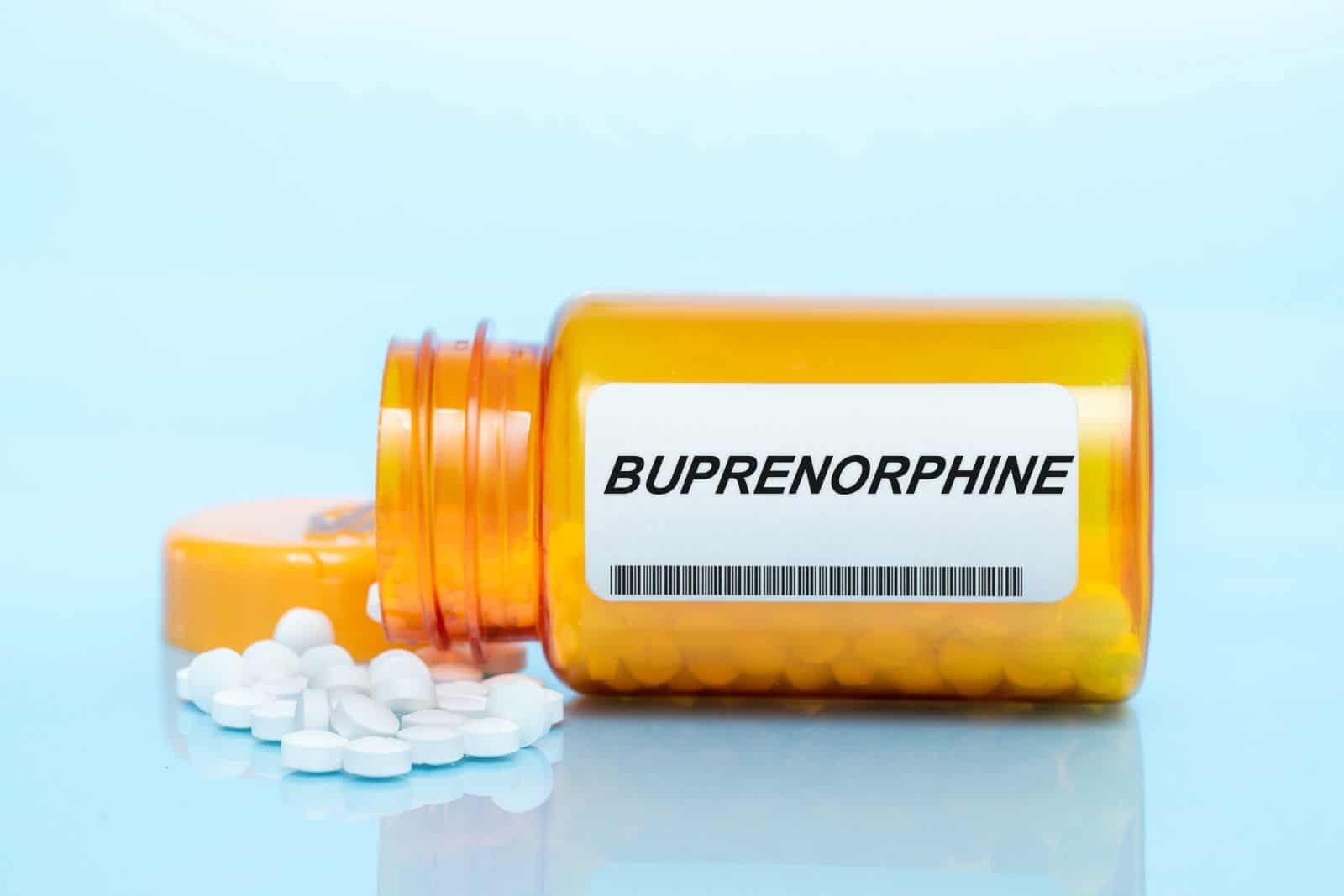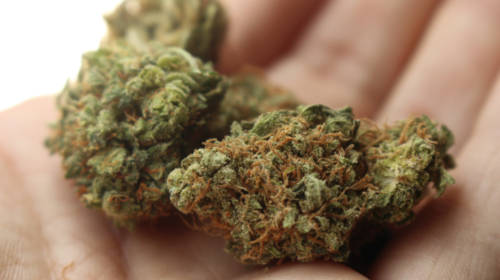Chronic pain is a struggle for countless Americans today. However, Suboxone® isn’t officially prescribed to treat pain but rather as a solution for Opioid Use Disorder. While those who take it may experience less pain due to the presence of a low-dose opioid, that is not its FDA-approved purpose. Given the rise of the opioid epidemic, there may be cause for concern when taking Suboxone® for pain.

What Is Suboxone®?
Suboxone® is a synthetic opioid made from a 4:1 ratio of buprenorphine and naloxone [1]. It’s been approved by the FDA to treat opioid dependence but has also been found to provide pain relief for those struggling with chronic pain.
Suboxone® is typically given to individuals enrolled in a medication-assisted treatment program in the sublingual form. It is highly effective in treating opioid addiction and lessening withdrawal symptoms and cravings for long-term addicts.
How Does Suboxone® Work In The Body?
Suboxone® is an analgesic made up of both Buprenorphine and Naloxone. Buprenorphine is a partial agonist that binds to opioid receptors slower than natural opioids reducing the possibility of achieving a “high” while also receiving the benefit of pain relief [2]. Naloxone is an opioid antagonist that fights against the effects of opioids and helps prevent withdrawal symptoms.
By combining these two drugs, patients are able to receive relief from cravings and withdrawal symptoms without running the risk of abuse or getting high. Suboxone® has also been proven to provide pain relief, which is why more providers have been prescribing it off-label to help with chronic pain management without the fear of substance abuse. However, this use of Suboxone® is not currently FDA-approved.
What Is Suboxone® Prescribed For?
Currently, Suboxone® is FDA-approved to be prescribed as a medication to help those suffering from opioid use disorder. Patients taking Suboxone® are typically part of a monitored opioid addiction treatment program and have to follow strict guidelines to continue to receive their 30-day supplies from their physician.
It is becoming more common to find prescribers also using Suboxone® off-label to treat chronic pain in their patients who have a history of addiction or are worried about becoming dependent on prescription painkillers such as oxycodone. However, since this medication must be prescribed by eligible healthcare providers that have completed training, it is not readily available for all chronic pain sufferers seeking pain management.
Can You Take Suboxone® For Pain Relief?
In short, yes, it may prove to be effective for you in relieving pain. However, due to the low opioid dosage, many patients who have built up a tolerance to pain relievers claim not to feel much of a pain relief benefit from the medication. In order to see if Suboxone® can help your individual pain level, you must first find a licensed prescriber for the medication and enroll in their Opioid Use Disorder treatment program.
The Connection Between Chronic Pain and Substance Use Disorders
Unfortunately, chronic pain and substance use disorders are forever linked since pain sufferers can easily become addicted to painkillers. This connection is the reason many prescribers are recommending the combination of medication along with counseling and behavioral therapies to treat the whole patient. This combination has proven successful while offering ultimate healing and recovery for patients [3].
Centers focusing on medication-assisted therapy as well as behavioral therapies have shown:
- More engaged program participants
- Increase in patient recovery and survival
- Fewer cases of relapse and illicit drug use
- Improved ability to re-engage with society
Should You Consider Suboxone® for Pain Relief?
Suboxone® is not FDA-approved as a treatment for chronic pain. However, there is a much lower risk of dependence as opposed to other opioid painkillers, and it also has many other benefits, such as lower immune system suppression, easier usage for seniors, and lower tolerance development.
Suboxone® isn’t right for everyone. If you have a history of alcohol use or are taking certain medications, Suboxone® may not be the best option for you as it’s dangerous to mix with alcohol and benzodiazepines, such as Xanax. Talk to your healthcare provider to see if the answer to your pain could be found in Suboxone®.
What Are The Side Effects of Suboxone®?
Possible side effects of Suboxone® are usually mild when compared to traditional opioids. The most reported side effects include the following:
- Constipation
- Difficulty Sleeping
- Headaches
- Stomach Discomfort
- Blurred Vision
- Tongue Pain
Less frequent but more serious side effects can occur, such as:
- Trouble Breathing
- Swelling of the Tongue or Mouth
Mixing Suboxone® with drugs like benzodiazepines can be lethal and should be avoided.
Suboxone® For Medication-Assisted Treatment
When used for its intended purpose, Suboxone® can be a highly effective part of a medication-assisted treatment program. Often used to treat opioid use disorder, it helps manage withdrawal symptoms and lessens the frequency and tendency of relapse.
For individuals who have been taking opioids for years due to addiction, Suboxone® can help activate the brain’s receptors that have become reliant on opioids to function normally. While producing the same feelings of satisfaction, Suboxone® has a “ceiling effect” that prevents individuals from reaching euphoria and becoming dependent. For this reason, it’s become one of the primary medications used for addiction treatment as patients seek recovery.
Medication-Assisted Treatment and Recovery Outcomes: The Official Reports
Medication-Assisted Treatment options for individuals struggling with Alcohol Use Disorder and Opioid Use Disorder often include Suboxone® as well as Methadone. Since Suboxone® has lower risks than Methadone, it’s quickly becoming the preferred medication for physicians.
Research by SAMHSA continues to show that combining medication with therapy can successfully treat substance use disorders and lead to lasting recovery. Additional benefits include a lower risk of contracting HIV or hepatitis C and improved birth outcomes for pregnant patients.

What Therapies Go Along With Suboxone® Treatment At Recovery Unplugged?
At Recovery Unplugged, we are proud to offer a wide range of medication-assisted therapies and holistic interventions that allow our clients to take advantage of a full continuum of care, including the benefits of Suboxone® treatment. Our clinical staff believes that there are fewer things in life that are more healing than music and pets, so we include both as often as possible in all of our therapy sessions. It’s simply hard to feel depressed when playing music or holding a furry friend.
We also offer a full spectrum of evidence-based therapies to offer practical support in your recovery. Each client receives an individualized treatment plan that will include a combination of cognitive behavioral therapies, group and individual therapy sessions, and personalized aftercare plans that are designed to address long-term personal goals and overall mental health.
Recovery and Hope
Recovery Unplugged has a passion for helping individuals find hope and freedom from substance use disorders. We believe that the most effective way of doing this is through a combination of medication-assisted therapy, behavior therapy, and, of course, music and animals. If you or your loved one are looking to break free from the cycle of addiction, we want to help. Reach out to our dedicated staff today to see which one of our programs best suits your needs.
























